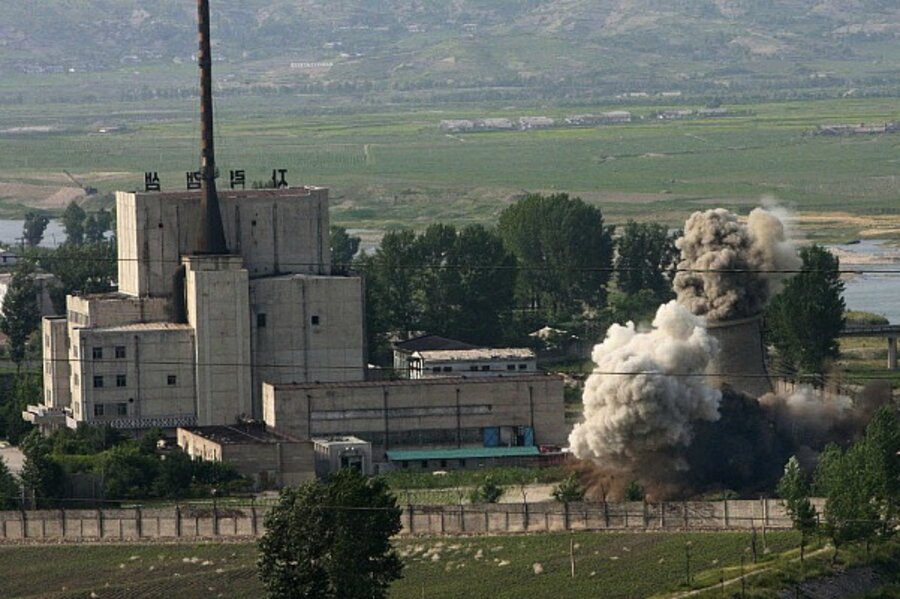Did North Korea secretly restart work on disabled nuclear reactor?
Loading...
| Washington
On Tuesday North Korea said it would restart a shuttered plutonium production reactor at its Yongbyon nuclear facility north of Pyongyang. Experts say this is among the most worrisome of the many threats North Korean officials have made in recent days, as this 5 megawatt (MWe) reactor, if rebuilt, would produce a steady stream of fissile material for new nuclear bombs.
But here’s a question of the day: has North Korea already begun work on this reactor in secret?
That’s the implication of an analysis of overhead photographs posted at “38 North,” a blog on Korean affairs produced by the Johns Hopkins School of Advanced International Studies.
“Commercial satellite imagery shows that new construction activity started at the 5 MWe reactor in the six weeks between the beginning of February and the end of March 2013, prior to ... Pyongyang’s announcement earlier this week that it intended to reactivate the facility,” write retired US intelligence analyst Nick Hansen and Jeffrey Lewis, Director of the East Asia Nonproliferation Program at the James Martin Center for Nonproliferation Studies.
The 5 MWe reactor has been out of commission since 2007. Per agreement between North Korea and the international community Pyongyang destroyed cooling pipes leading to the building and eventually blew up the large wooden cooling tower to which those pipes had led.
Now imagery shows that construction has already begun at the rear of the reactor building and along an adjacent road, according to Hansen and Lewis. It appears the North Koreans are digging a ditch – possibly to lay pipe to replace destroyed sections.
“The water pipes that connected the reactor to the old cooling tower likely followed this road underground,” the pair note.
North Korean engineers would still need to connect this pipe to something that would complete a cooling cycle. Replacing the destroyed tower would take time – perhaps six months. But connecting the pipes to the cooling system of another reactor, an experimental light water reactor under construction nearby, could do the trick much more quickly – allowing Pyongyang to restart the reactor within weeks, rather than months, according to the “38 North” post.
There would still be the question of fuel. And as it happens, the North Koreans have a large stash of 12,000 fuel rods constructed for a much larger reactor project they never completed.
These rods “could be reclad to be used in the 5 MWe reactor if North Korea chose to restart it,” writes Congressional Research Service nonproliferation expert Mary Beth Nikitin in a newly-updated monograph on North Korea’s nuclear capabilities.
Of course, that’s indoor work that would be much easier to hide than a cooling pipe excavation. It’s quite possible the North Koreans are already doing this.
“It is conceivable that, out of sight of prying satellites, North Korea has already refashioned the fuel rods,” wrote International Institute of Strategic Studies nuclear expert Mark Fitzpatrick in an analysis completed prior to publication of the new satellite imagery of Yongbyon.







